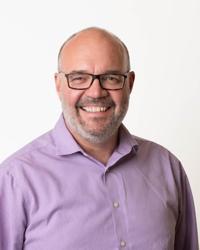Cancer researchers say patients are living longer thanks to better detection and treatments, but they fear rising case numbers and gaps in data could undermine gains.
They’re calling for more investment in health-care and disease management as they predict an aging, sicker population will further strain an already stretched system while at-risk groups fall further behind.
The Canadian Cancer Society released a report Tuesday that found as of Jan. 1, 2018, more than 1.5 million people in Canada had received a cancer diagnosis in the previous 25 years and were still alive on that date.
Cancer surgeon and researcher Dr. Christian Finley says more than half of this group lived with or beyond cancer for at least five years, illustrating better survival rates but also a broader societal toll as the impact of each case ripples through families and communities.
He says more information is needed on the various socioeconomic factors behind the numbers, which also found a higher preponderance of breast cancer diagnoses among the highest-income patients.
"That's really because they participate in screening and people that are of lower socioeconomic status struggle to get by on the best of days, let alone getting out to those medical appointments," says Finley, a professor at Hamilton's McMaster University.
Findings were similar for prostate cancers, but reversed for colorectal and lung cancer for which lower-income patients are much more likely to be newly diagnosed but are less likely to survive.
"As we move forward, we clearly need to invest more in research," says Finley.
"That equity lens is really one that we always have to keep with us because a lot of the times the people who are already falling behind fall further behind if we don't remember to put extra effort in that area."
The report also found slightly higher rates of cancer among rural residents who had lived with cancer for at least two or five years when compared to urban residents. Authors say rural residents tend to be older, may have less access to screening and care because of travel distance, and live in regions where risk factors including smoking, alcohol consumption and obesity tend to be more common.
Still, data is lacking to fully understand the various social, racial and environmental factors in population subgroups, they say.
Epidemiologist Jennifer Gillis, a society spokeswoman who also worked on the report, says the Canadian Cancer Society is co-leading efforts with the Canadian Partnership Against Cancer to improve data collection. She says the Public Health Agency of Canada and Statistics Canada are also working to better integrate socio-economic and ethnocultural data with cancer outcome data.
J. Nadia Headley says she wishes Canadian data on risk factors for Black women had been available to help her understand her own case of breast cancer, which she discovered during a self-exam at age 30.
The 34-year-old, who moved to Toronto from Barbados in 2015, says she's thankful for a supportive medical team that ordered multiple tests to confirm Stage 3 cancer, even after a mammogram showed no problems with her dense breasts.
“I personally know of individuals who've been denied mammograms because they weren't 50 yet, who then turned out to have cancer,” says Headley.
“The policy that guides a lot of their conversation that they're having with their patients, those policies are outdated, there is more than enough data to suggest that we need to be doing screenings at younger ages, we need to be talking more about breast cancer and other forms of cancer.”
Of the four most common cancers, more people die of lung cancer than colon, breast and prostate combined, says Finley but those patients are little seen in the prevalence data because it only reflects people who are still alive.
The report lists 330,085 cases of breast cancer, 301,835 of prostate cancer, 191,520 of colorectal cancer and 68,785 of lung cancer. Only 37 per cent of lung cancer patients were still alive after five years, compared to 66 per cent of those with breast cancer, 68 per cent of those with prostate cancer and 59 per cent of those with colorectal cancer.
Nevertheless, Finley says lung cancer screening is getting better at identifying cases and finding them earlier, while treatments "are really transformative."
"It's a time of great optimism in lung cancer," he says. "We're really bending that curve on survival.”
The impact of the pandemic is still an open question, he adds, noting that COVID-19 has stressed the entire health-care system.
He echoed the report's call for investment in medical research and health-care while pointing to staff exhaustion, supply chain problems and hurdles patients face in accessing each stage of care
“That's the concern, that some of these hard-fought gains will have a setback,” he says.
"Canadian Cancer Statistics: A 2022 special report on cancer prevalence" was developed by the Canadian Cancer Statistics Advisory Committee in collaboration with the Canadian Cancer Society, Statistics Canada and the Public Health Agency of Canada.
This report by Ďă¸ŰÁůşĎ˛ĘąŇĹĆ×ĘÁĎ was first published Nov. 8, 2022.








































